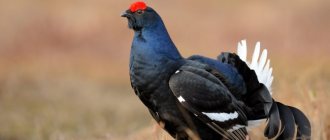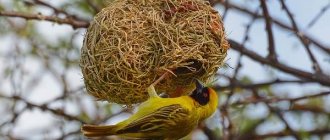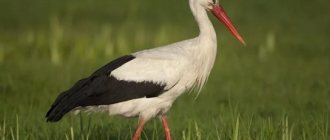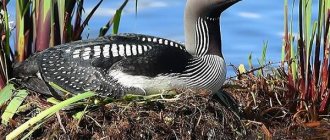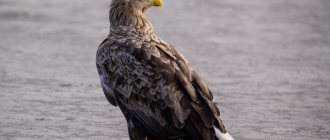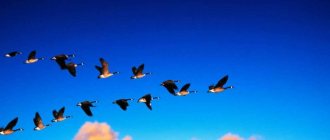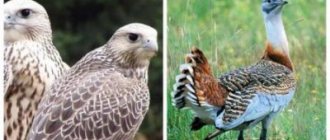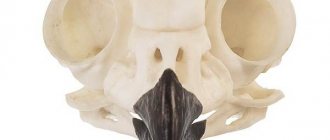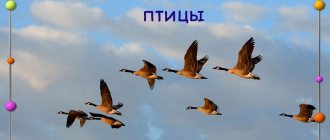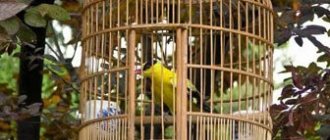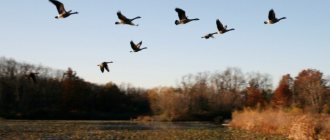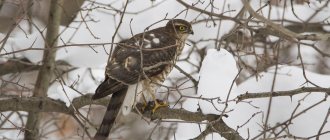Nature is a wonderful place, filled with millions of species of unique animals that most people have never even heard of. Birds are traditionally considered beautiful creatures and are known for their sweet songs. However, there are species that have adapted to their environment, their voices and appearance are strikingly different from the traditional perception of birds. Some birds look strange due to their abnormal plumage, unusual beak shape and, of course, appearance. Some of them also have surprising habits in diet, mating ritual and mating. Here is a list of the 33 most unusual looking birds in the world.
Abyssinian horned raven
Flies to catch prey and protect territory, runs away when in danger. The large beak is crowned with a bony protrusion. The eyes are decorated with long eyelashes. Yellow mark at base of beak. They use their long paws to get food. Males have blue and red throat, blue around the eyes, females have blue on the eyes and throat. Males are slightly larger. Young birds have brown feathers and a less bright throat color.
Spectacled eider
The birds live in Alaska and Northeast Siberia. Males are unique. The great sea duck's head ranges in color from pale green to bright orange, making it one of the most beautiful birds. The intense gaze and distinctive "spectacles" around the eyes give this species its name. When the mating season ends, all the plumage disappears, and the males again resemble females in appearance.
Helmeted cassowary
The large size, grayish helmet and red beard hanging from the neck make the bird easy to identify. The body feathers are black and look like hair. The bare skin of the head and front of the neck is blue, the back of the neck is red. Both sexes are similar in appearance. Females, as a rule, are larger than males, and their helmets are taller and brighter in color. The young are browner than the adults, with a dull head and neck.
Sage grouse
A large grouse with a plump round body, a small head and a long tail. Males change shape when they show themselves to females, becoming almost spherical, inflating their chests, lowering their wings and raising their tails. The body is spotted gray-brown with a black belly. Males have a black head and throat. The chest is decorated with a fluffy white collar. Females have darkish spots on the cheeks and white markings behind the eyes.
Fan-crowned pigeon
The dusty gray-blue feathers are reminiscent of outdoor pigeons, but the elegant blue lace crest, scarlet eyes and dirty black mask make them look different from the city park birds. This is the largest of all pigeons, almost the size of a turkey. The birds live in pairs or small groups in the forests of New Guinea, where they search for seeds and fallen fruits, which make up most of their diet.
Shoebill
They stand in the water for hours, and the victims are unaware of the grim fate that stares down at them. The blunt beak looks like a cruel joke of evolution, but in fact it is a deadly tool. Having taken the body of the prey in its beak, the bird opens it just enough for the prey to stick its head out. Then he presses his sharp-edged beak, cuts off the head, and swallows the rest of the body.
Ecuadorian umbrella bird
A rare and unusual inhabitant of moist foothill and lowland forests of the Pacific slope of the Andes, from Colombia to southwestern Ecuador. The male's chest is wattle-like. He shortens it at will, for example, removes it in flight. Females and immature males have little or no wattle, but all birds have a comb and it is shorter than that of adult males.
Great Indian kalao
Females are smaller with bluish-white, males with red eyes. The orbital skin is pinkish in both sexes. Like other hornbills, they have “eyelashes.” A distinctive feature is a bright yellow helmet on a massive skull. The helmet is U-shaped at the front, the top is concave, with two ridges on the sides. The back of the helmet is reddish in females, the underside of the front and back of the helmet is black in males.
Blue-footed booby
A large seabird with heavy, long, pointed wings and a beak and a relatively long tail. Brownish above and whitish below, with a white patch on the back of the neck and a narrow white stripe near the tail. Adults have bright blue feet and grayish-brown stripes on the pale head and neck. Juvenile birds have brown feet and dark brown stripes on the head, neck and chest.
Hatchet
The seabird hunts in open waters and lives on islands and coastal cliffs in the North Pacific Ocean. Nests in deep burrows (more than 1.5 m). Larger than other puffin species and different in appearance, the bright white “mask” and golden head feathers grow during the breeding season. Catches and holds small fish from 5 to 20 in its beak and carries it to the chicks in the nest. Adults eat food underwater.
Wonderful bird of paradise
The male is on average 26 cm long, the female 25 cm. The adult male is dark black with an iridescent crown and a blue chest shield, a crest of elongated feathers on the back of the head flutters symmetrically when raised. The female has a blackish-brown head with a pale spotted stripe running across the forehead, above the eyes and around the back of the head. The underparts are light brown with dark stripes.
Scaly bird of paradise
An adult bird is about 22 cm long. The male is black and yellow. The iris of the eyes is dark brown, the beak is black, and the legs are brownish-gray. The male has two surprisingly long (up to 50 cm), elegant, enamel-blue eyebrows extending from his beak, which the bird raises at will. The unadorned female is grayish-brown with stripes on the underparts.
Blue-headed magnificent bird of paradise
The male's back and wingtips are crimson, the tops of the wings and tail are brownish-black. There is a yellow “cloak” on top, an emerald chest, purple paws and feet, and the inside of the mouth is pale green. The unique turquoise crown (visible at night) is bald with several black feathers visible on top in the shape of a cross. The long violet-blue feathers near the tail are divided into two parts.
Ceylon frogmouth
The large-headed bird has a large, flattened, hooked beak. The female is red, slightly spotted with white. The male is gray and more prominently spotted. This species holds onto branches with its paws in an upright position during the day. The mysterious plumage looks and disguises the bird as a broken branch. At night, it hunts insects with its large, wide beak and catches prey under the forest canopy.
Long-tailed velvet weaver
The male “puts on” dark plumage for the breeding season. Weavers are found in small flocks near swampy pastures. Males during the extramarriage period are similar to females, only slightly larger. As mating season approaches, the male turns completely black, with the exception of an orange-white shoulder patch, and develops an unusually long tail with twelve feathers.
Brilliant painted painter
The plumage of the male during the mating season ranges from cobalt blue in the east to violet blue in the west of the range. Black stripes at the base of the tail (absent in violet-blue birds) extend across the chest to the beak, eyes and the back of the neck. The crown and cheek patches are pale blue. The wings and long tail are brown with a blue tint. The beak is black, the legs and feet are brownish-gray.
Lilac-capped painted painter
The plumage of males during the breeding season is crowned with a bright purple crown with a black center, surrounded by a wide black stripe passing through the eyes and around the back of the head. The wings and back are cinnamon to sandy, the throat and chest are white, the sides and belly are buff. The tail is dark blue and, except for the central pair of feathers, the tips of the feathers are white. Females have white eye rings and forehead, and wide red-brown cheek patches.
Crowned flyeater
It has a long beak, a red or yellowish tail, and brown plumage. The most noticeable feature is the long decorative crest, red to orange (paler in females) with black and blue spots. The comb creates a “hammer head” appearance. These birds are known for flaring their crests when held in the hand and rhythmically shaking their heads from side to side.
Quezal
During the mating season, males grow double tail feathers that form an amazing train up to a meter long. Females do not have this feature, but they are colored bright blue, green and red, like males, but less bright. Pairs use powerful beaks to build nests in rotting trees or stumps, take turns incubating eggs, and the long tails of males sometimes stick out.
Lilac-breasted Roller
The head is large and green, the neck and greenish-yellow legs are short, and the toes are small. The beak is black, strong, curved and hooked. The tail is narrow and of medium length. The back and shoulder blades are brown. The shoulders, outer wing and rump are purple. The color of the feathers is pale greenish-blue, the outer tail feathers are elongated and blackish. The chin is whitish, blending into the purple chest. The underparts are greenish-blue. The eyes are brown.
Toucan bird
The toucan is considered a tropical relative of our woodpecker. A distinctive feature of the bird is its huge beak, which in some individuals can even exceed half the body in size.
Another attractive feature of the toucan is its bright color. The plumage of birds contains all possible color combinations. Also, some may differ in the saturation of the color plumage. These birds are very friendly towards people, so they are easily tamed and live at home.
The photo shows a tropical bird toucan
Green-headed tanager
The green-headed tanager is found in southeastern Brazil, Paraguay and northern Argentina. The bird is listed in the IUCN Red List.
The small colorful bird skillfully sneaks among the tropical foliage, making it difficult to spot. Its color is blue-green, which helps the tanager go unnoticed among the tropical forests.
The green-headed tanager does not hunt alone; a representative of this bird species is a family creature and travels in large groups, which usually include no more than 20 birds.
There is nothing more beautiful than watching a tanager in flight! Its plumage contains the most saturated colors. You look and understand how amazing wildlife is!
Paradise Bird
The bird of paradise is the most beautiful bird not only in appearance but also in the way it can make an impression. Belongs to the order of passeriformes, lives on the islands of New Guinea, Australia and the Moluccas.
Also, this bird is the most inaccessible, it loves the wilderness of forests; to see it you need to be patient. Dense planted spaces are their abode. The bird of paradise family includes several subspecies.
A distinctive feature is curled feathers on the tail, varied colors and a turquoise cap on the head. They live in flocks and feed on seeds, nuts, berries, fruits, and small insects. One of the inaccessible and mysterious birds.
Pictured is a tropical bird of paradise
Kingfisher
The kingfisher is a miniature bird; in size it is practically no different from a sparrow. The bird is resistant to low temperatures and lives over a vast territory from Africa to Russia.
The kingfisher family includes a wide variety of birds, differing from each other in size, color and habitat. Males and females of birds do not differ in color, but males are somewhat larger.
The kingfisher is a bird that prefers silence and a solitary lifestyle. They try not to meet the person. Their singing resembles the chirping of representatives of other birds - sparrows, and is not very pleasant to human hearing.
Lesser Hyacinth Macaw
The parrot, originally from Brazil, is large in size, with an excellent character and excellent appearance. The small hyacinth macaw has a body length of 70-75 cm and weighs about 900 g.
The rarest of all macaw subspecies, it was fully described in 1856 by Charles Bonaparte. It feeds on grains, tropical fruits, larvae, seeds, berries and greens. The color of this tropical bird is mostly blue with a metallic tint.
The plumage can have a huge number of shades of blue - from light to dark, interspersed with green or black feathers. The feathers near the beak may turn yellow. The bird is graceful, intelligent, and very attached to its owner.
Lesser Hyacinth Macaw
Hoatzin bird
To escape danger, small hoatzin chicks can jump into a pond, being able to swim well. But unfortunately, as the bird grows older, it loses this ability. But adult representatives defend themselves with their own weapons. The bird has a strong musky odor, after which neither a person nor a predatory animal will eat it.
Hoatzin bird
Kalao or hornbill
The rhinoceros bird is called the kalao because of the structure of its large beak. Birds feed on all kinds of fruits. Kalao, like all feathered inhabitants of the tropical forest, has a bright, memorable color.
In the photo there is a rhinoceros bird (kalao)
Blue-footed booby
The blue-footed booby received its name due to its unusual turquoise-colored feet. They are equipped with membranes, thanks to which the bird can move under water.
When hunting for fish, the gannet can dive 25 m into the depths of the sea. If the hunt is successful, the bird emerges from the water 2-3 meters from the place where it dived.
Click share and leave a comment:
Indian peacocks
Magnificent tropical large birds with huge tails. Worthy only of a royal palace, we are talking about colorful peacocks. The predominant colors are blue and green; the rest of the plumage may contain splashes of red, yellow, gold, and black.
The bird is amazing, first of all, for its behavior. When attracting a female, peacocks are ready to demonstrate mating dances, full of grace and grandeur. The peahens, in turn, choose the most worthy.
The main advantage of the peacock is its fan tail, which it uses during courtship and mating. Occupies almost 60% of the entire body area. Long feathers are capable of spreading in both directions until they completely touch the ground. Pava will choose the most virtuoso dancer; the main role is played by the color and density of the plumage.
Indian peacock
Hoopoe bird
A tropical bird with bright plumage lives in different regions of Eurasia and Africa. The bird is medium in size, with dark stripes all over the body. A distinctive feature of the hoopoe is its funny crest on its head. The tips are also painted in dark tones, which adds some elegance.
It has a long thin beak, which allows it to reach small invertebrates (insects and their larvae). They create pairs for a long time, hatching offspring once a year. They can settle not far from manure heaps and waste. The modern hoopoe is the ancestor of the giant hoopoe, which lived on the island of St. Helena and became extinct in the 16th century.
Hoopoe bird
Quezal bird
Quetzal or quetzal belongs to the order Trogon-like. They live in Panama and Central America. Settles very high on trees no lower than 50 meters high. In mountainous areas it creates nests at the highest points.
The male has very bright green plumage on top, along the body there is a golden red tint with a metallic sheen. In the tail there are two long feathers, reaching 35 cm. The ventral part has a bright crimson color.
The male has a small but wide fluffy crest, while the female does not have it. It uses ocotea fruits as food, but does not disdain small frogs, snails and insects.
The Quezal was considered a sacred bird among the Mayans and Aztecs. Previously, they numbered a large number of individuals, but are now on the verge of extinction. They cannot be bred in captivity.
In the photo there is a quezal bird
Carolina duck
Most common in North America, they are one of the continent's most visible birds. They, unlike other ducks, place their nests in hollows. Males have a purple-green head, a metallic crest, a red chest and a white belly. Their wings are black with a blue pattern.
Females are not as colorful and are mostly gray in color, fading to white on the belly. Males are usually taciturn, but the female’s voice is characteristic, reminiscent of a loud squeal.
3
Multicolored lorikeet
The multicolored lorikeet belongs to the loris parrot family. The bird is up to 30 cm long and has a variety of colors throughout its body. The head and lower part of the body are bright blue, the sides and neck are yellow.
The upper part, wings and tail are bright green. A fairly common bird, it lives in Australia, Goali Island, Solomon Islands, New Guinea, Tasmania. Settles in tropical high-trunk forests.
They are widespread on the east coast of Australia. They adapt well and are willingly tamed by people. They feed on berries, seeds, fruits and greens. They live up to 20 years, which is why you can often see lorikeets at exhibitions, circuses and pet stores.
Multicolored lorikeet
Abyssinian horned raven
This type of bird is distinguished by a noble horn above its beak, by which it can be distinguished from other birds.
Abyssinian horned crows are large birds of prey that also eat nuts, fruits, and seeds. Their habitat is the hot semi-deserts and savannas of Africa. There is also a population of horned crows known to exist in Florida. In captivity, these elegant creatures live up to 40 years.
hummingbird bird
Miniature and agile hummingbirds have a long, sharp beak in order to get as close to the flower as possible. But in addition to the long beak, the bird also has a long tongue, with which it easily extracts nectar. The plumage contains various bright colors; it is quite difficult to distinguish a male from a female.
In the photo there is a hummingbird bird
Ceylon frogmouth
Photo source: KHUSHBOO & RAHUL SHARMA / flicr
Already from the species name it becomes clear that an unusual bird lives in the vastness of Sri Lanka, and its flattened large hooked beak looks like a frog’s mouth.
Apart from the island, the birds nest in regions of southwestern India. Adults grow up to 23 cm long, and the tail length reaches 10–12 cm. Males have brownish-gray plumage, but female frogmouths are red. They fly weakly and spend most of their time sitting on the branches of tropical trees.
Birds fly out to search for food at dusk and strictly adhere to their territory. The diet includes a variety of insects.
8
Red cardinal
A medium-sized bird, up to 20-23 cm long. The male is slightly larger than the female, painted in a bright crimson color, with a black mask on his face. The female is light brown in color, with bright red splashes. The beak is strong, cone-shaped, and can easily peel off the bark to reach insects. The legs are painted pink, the pupils are dark brown.
The cardinal's habitat is the eastern United States. However, three centuries ago the bird was introduced to Hawaii, Bermuda and California. It quickly caught on and is widespread. The cardinal has a wonderful baritone, his trills resemble those of a nightingale, sometimes called the “Virginia nightingale.”
Cardinal bird
barn owl
The barn owl is found on all continents except Antarctica. However, despite its good ability to adapt, this bird is not able to accumulate fat reserves, which prevents it from spreading across cold territories. So, in Russia it can only be found in the Kaliningrad region. The barn owl is easily distinguished from all owls by the shape of its facial disc, which is shaped like a heart.
The bird received its Russian-language name because of its hoarse voice, similar to a cough. And for its silent flight and unexpected appearance in a person’s field of vision, it was nicknamed the ghostly owl. So meeting this beautiful bird can be a nerve-wracking experience.
Crowned Crane
The crowned crane is a large bird of the true crane family. Lives in East and West Africa. If the drought lasts for a very long time, they migrate closer to the tropics, into dense forests.
The bird has a height of up to 1 meter, a wingspan of up to 2 meters. The body plumage is mostly black or gray-black. The main advantage is the fluffy crest, consisting of golden feathers. The wing feathers are often white or milky in color.
The crane leads a sedentary lifestyle, feeding on plant and animal food. The breeding season occurs during the rainy season. Prefers marshy areas and does not disdain farm or agricultural land.
Pictured is a crowned crane
If you carefully look at the photos of tropical birds , then they are all united by the brightness of the colors in their plumage. Many of them are on the verge of extinction because they are friendly and trusting by nature. Some species cannot be bred in captivity. Taking good care of and stopping the deforestation of tropical forests will help preserve exotic birds.
Maned (Nicobar) pigeon
The maned dove is a close relative of the legendary Dodo bird. It is most common in the tropical forests of the Nicobar and Andaman Islands, for which it received its second name. These beauties have a mane of long iridescent feathers around their necks, as well as main plumage that shimmers in different colors. Since they live mostly on uninhabited islands, where there are few natural enemies, they gain weight up to 600 grams. More often than wings, they use their powerful and long legs to move along the ground in search of food.
Maned pigeons are monogamous and choose a partner for life, and both parents incubate the eggs and care for the chicks
The stomach of maned pigeons is designed in a special way and gives them the opportunity to digest hard nuts along with the shell.
Birds gather in flocks and roam around the islands in search of food, while flying in columns, guided by the white feathers in the tails of their relatives flying ahead. The beauty of maned doves is of great interest to poachers, who sell them to exotic enthusiasts, and due to the destruction of forests the bird's habitat is shrinking, so the species is now considered "near vulnerable".
